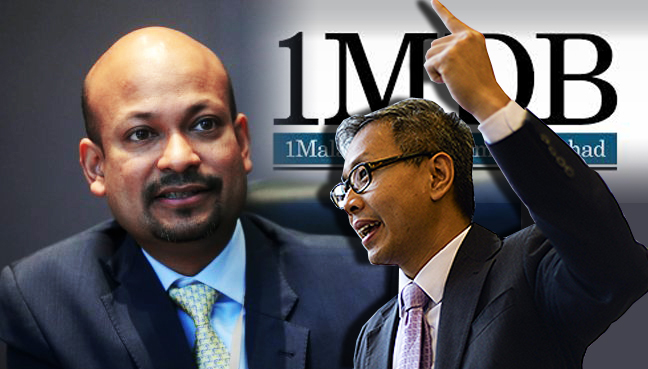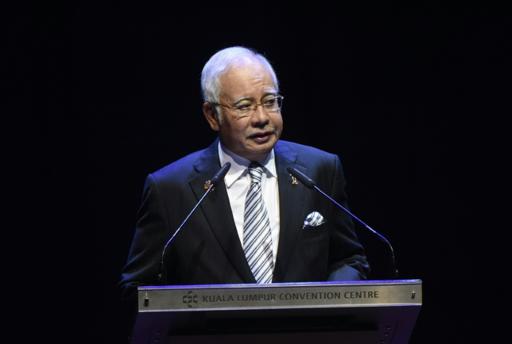What a rollercoaster ride 2015 has been. We in Malaysia have witnessed and experienced several controversial dramas and stand-offs that will go down in history. Here’s a look at some of the major showdowns that took place this year.
1. Tony Pua vs Arul Kanda

Image credit: Malaysia Chronicle
There was so much name-calling, taunting and jeering in this one that Malaysians were ready to clear their schedules to watch Opposition lawmaker Tony Pua and 1MDB Chief Executive Officer Arul Kanda battle it out over issues surrounding 1MDB.
If it had gone ahead, it would have been the first time Arul took on one of his and 1MDB’s chief critics. He was scheduled to appear before the Parliamentary Public Accounts Committee (PAC) as part of a probe, but it did not materialise after a Cabinet reshuffle absorbed some of the PAC members into government positions.
The controversial issues around 1MDB include questionable huge debts, at one point amounting to RM42billion, and allegations that RM2.6 billion was deposited into Prime Minister Najib Razak’s personal accounts.
Democratic Action Party (DAP) politician Pua was one of the many public critics of 1MDB, and the debate was planned in a talk show format to be aired live by Radio Televisyen Malaysia (RTM). Question were even prepared ahead for Arul, and you can read them here.
But, Parliamentary Speaker Pandikar Amin Mulia had said if Pua wanted to face Arul, he would have to step down as a PAC member or recuse himself from in any further 1MDB probes by the committee. Parti Keadilan Rakyat (PKR) politician Rafizi Ramli offered to take Pua’s place, but the debate was called off.
2. G25 vs G25 critics

Image credit: The Malaysian Insider
It began last December, when an original group of 25 individuals published an open letter to ask for a rational dialogue on the position of Islam and Islamic law in a constitutional democracy.
In this letter, the group asked PM Najib to address religious and racial tension and exercise leadership in guiding Malaysia back to moderation, citing, “lack of clarity and understanding” on the place of Islam within Malaysia and “serious breakdown of federal-state division of powers, both in the areas of civil and criminal jurisdictions”.
The letter also expressed concern at how religious authorities were “asserting authority beyond their jurisdiction” and that fatwa issued had violated the Federal Constitution as well as the consultative process. The group began as 25 members of retired civil servants and influential leaders, led by former diplomat Noor Farida Ariffin and at one point doubled its membership.
On its site, the G25 said, “G25 members share a common value that, while recognising Malaysia is a predominantly Muslim country with Islam as the official religion, we believe that its administration should be in line with the constitutional provisions regarding the role of Islam guaranteeing all citizens their fundamental rights to freedom of expression and worship.”
“To this end, we are all agreed that Islam must be administered in a manner that ensures justice to Muslims and non Muslims alike, as this is crucial for peace and stability in our multiracial country.”
But for its openness, the G25 faced many critics including Malay rights group Perkasa who wanted the government to declare the moderate movement as “deviants”. In a December meeting, Perkasa asserted that the G25 was spreading “deviant teachings of liberalism and pluralism” and claimed it had grown to an extent that “can threaten the faith of Muslims” in the country, and pushed for Putrajaya to take legal action against any group or party that threatened Islam.
G25 leader Noor Farida herself was under a sedition inquiry after her call to review Islamic laws governing khalwat, or close proximity between a man and woman. She had earlier been threatened with rape on Facebook by Animal Action Group president Sharul Nizam Ab Rahim, but authorities were investigating her instead.
3. Bersih 4.0 vs Red Shirts

The year was huge for rallies and you wouldn’t have missed Malaysia’s showing of public demonstrations if you tried.
First it was the gathering of Bersih supporters, in what could have been the longest and largest rally for Bersih 4.0 in August. It was the first time an overnight rally of this size was planned in Kuala Lumpur, with similar-styled demonstrations held at the same time major cities such as Kuching, Kota Kinabalu, Penang and Ipoh.
The two-day affair saw the participation of hundreds of thousands of people dressed in yellow and gathering around Dataran Merdeka, with hundreds spending the night on the streets or at hotels in the city. Bersih 4.0 is a civil society movement consisting of 84 non-government organisations.
READ: Bersih 4.0 vs Red Shirts: A Visual Comparison by Coconuts KL
Coinciding with National Day celebrations, Bersih 4.0 called for reforms in the electoral systems and a clean government, protesting against allegations of 1MDB’s financial impropriety and claims of funds channelled to the Prime Minister’s accounts.
Critics accused Bersih 4.0 of being led by a majority of Chinese supporters, with fewer Malay participation compared to its past showings since 2007. Making a surprise appearance on both days of the rally was former Prime Minister Dr Mahathir Mohamed and his wife Siti Hasmah Mohamad Ali.
Not to be outdone by the yellow-shirt Bersih supporters, a rival group organised a counter rally on Malaysia Day on September 16, calling it the United Citizens’ Gathering. There was initial confusion as to who was the main organiser of these rally, but the intention was to galvanise Malays against a supposed plot by the Chinese to usurp Malay political power.
The National Silat Federation (Pesaka) was responsible of this demonstration, that was referred to as the Malay Dignity Gathering and “Red Shirt” rally. Like Bersih 4.0 it was initially declared illegal. But it was then made legal after authorities received its application to use Padang Merbok as a gathering point. Some members of ruling party UMNO criticised the Red Shirt gathering, calling its leader Jamal Yunos, an UMNO politician himself, selfish and organised the rally to gain political mileage.
4. Battle of the Prime Ministers

One of the more unforgettable showdowns is the long-standing battle between Prime Minister Najib and his former mentor Dr Mahathir Mohamad, a feud that could still be simmering as we speak.
In his past,Dr Mahathir had successfully dislodged two prime ministers as well as two deputy prime ministers, one of whom terms the longtime leader as a ‘political terminator’. The 90-year-old Dr Mahathir served as PM from 1981 to 2003, and was involved in the resignation of first prime minister Tunku Abdul Rahman after the racial riots in 1969.
Dr Mahathir also criticised his successor Abdullah Ahmad Badawi, Malaysia’s Prime Minister in 2003. Abdullah resigned ahead of a scheduled transition to Najib due to Barisan Nasional’s poor performance in the 2008 elections.
The vocal Dr Mahathir has since targeted Najib, calling the PM to resign over allegations of the misappropriation of funds out of 1MDB.
Dr Mahathir has since attacked Najib for his family’s lavish lifestyle and even attending the Bersih 4.0 demonstrations, despite his objection to protest rallies. Najib had countered most of his former boss’ criticisms, and at one time publicly announcing at a global financial conference, stating that, “never in his wildest dreams would I have thought that one of my predecessor will be against me in this manner.”
5. Malaysian athletes vs dress code

Sports attire took centrestage this year after the Malaysian Islamic Development Department (JAKIM) considered reviewing the guidelines for athletes’ clothes to be more syariah-compliant.
The debate over what sporting folk could wear began when Malaysian gymnast Farah Ann Abdul Hadi made headlines winning two gold medals, a silver and three bronzes in the Singapore SEA Games. However, her win was overshadowed by complaints over her attire, with some social media users stating she was exposing her “aurat”, which should be covered as required in Islam.
But the debate over her purple leotard divided her critics and supporters, with many defending her and criticising those with narrow views over sporting attire. The gymnast herself did not take it seriously, as she had tweeted, “Empty cans make the most noise” in response to the negative chatter.
Youth and Sports Minister Khairy Jamaluddin had said the guidelines were just guidelines and there was no compulsion to cover up. “We have to remember some sports attires are regulated by the sports federations. Besides, the athletes only wear the attire during competitions, they don’t wear it every day.”
The minister also hit out at critics as hypocrites, saying that “Male athletes don’t get this kind of attention, body-builders wear much more revealing trunks. The critics can look elsewhere… or, if they cannot contain themselves, we will have to ban them from entering stadiums.”





Reader Interactions